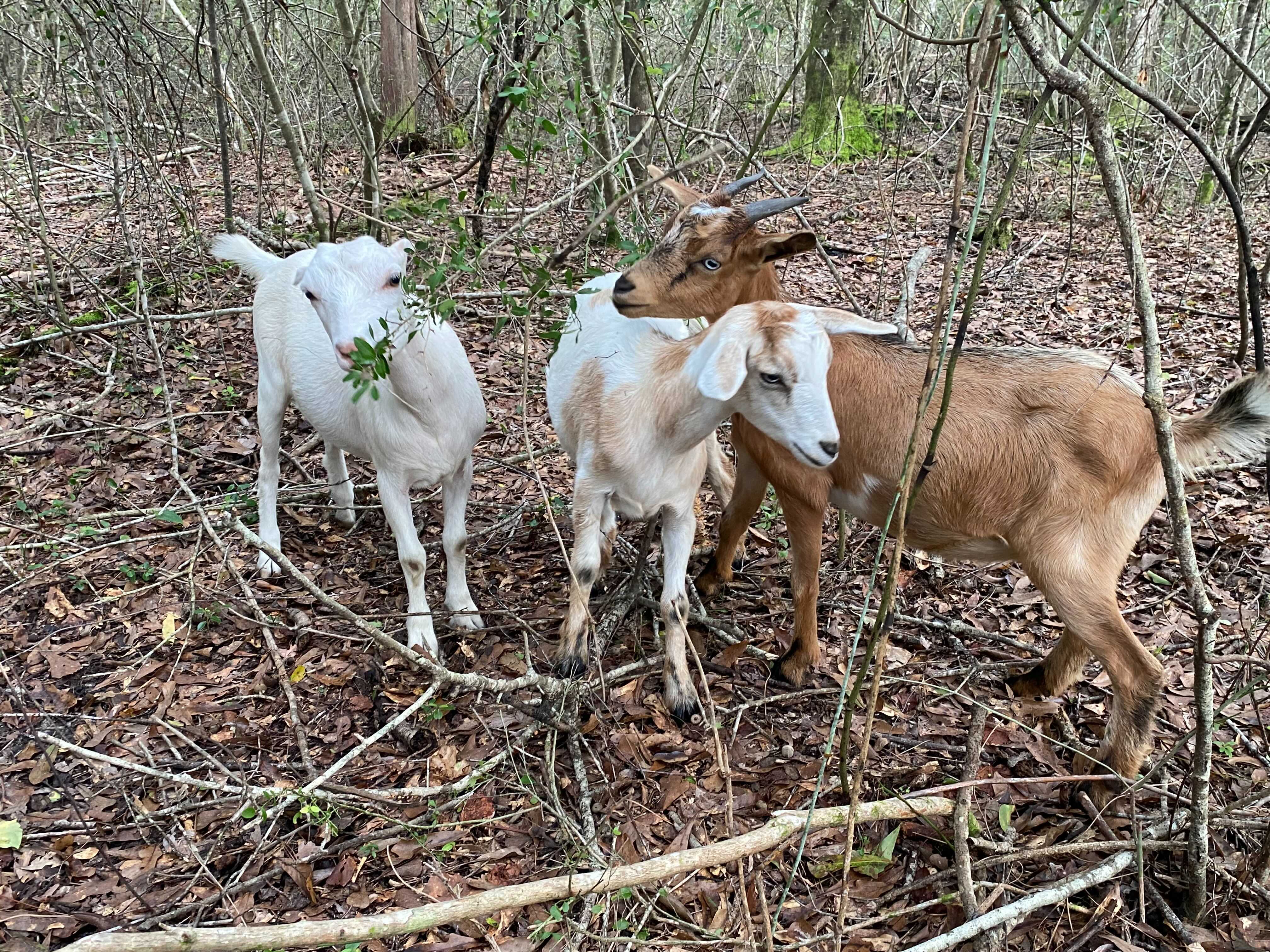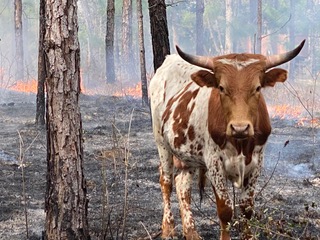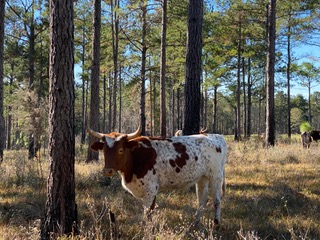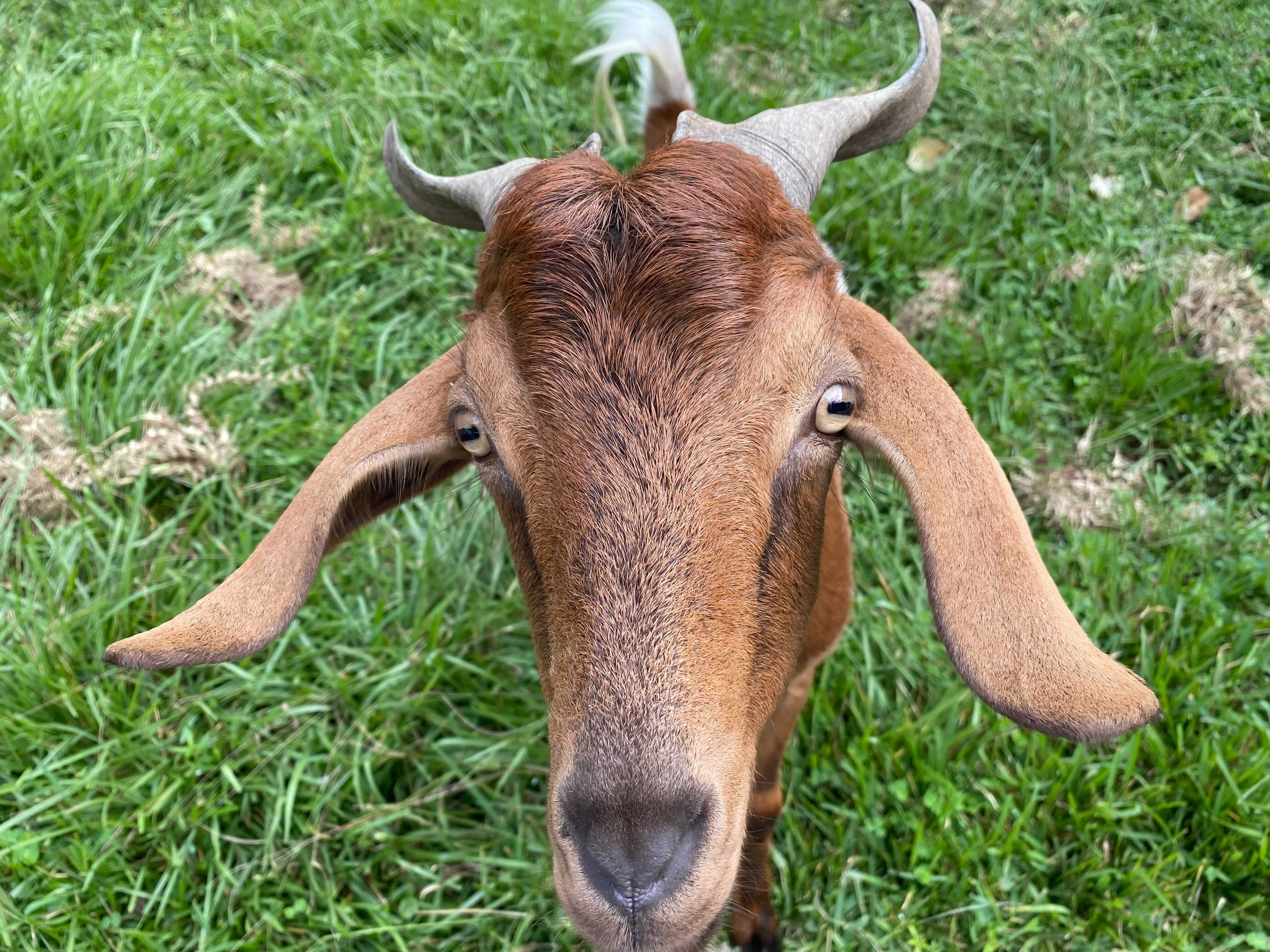What is Conservation Grazing?
Conservation grazing, commonly known as targeted grazing, is an integrated land management technique in which livestock is selectively chosen to graze upon underbrush, invasive species and/or other vegetation to enhance the diversity of plant communities, provide modes of seed dispersal and eliminate the use of herbicides, among other ecosystem services.
Objective:
The primary goal was to determine when, where and how to implement targeted grazing into land management programs along coastal uplands throughout the northern Gulf of Mexico. NOAA RESTORE Science award information can be found HERE.
Deliverables:
An Application Plan along with a Research & Development Plan developed by the management team can be accessed HERE. Mississippi-Alabama SeaGrant Publication 23-058
Background:
Management of coastal uplands is becoming more difficult with extensive coastal development compounded with the impacts of climate change. Natural resource managers struggle with restoring and maintaining these habitats due to the heavy front-end investment and need for prolonged maintenance. Major activities essential to the restoration of unmanaged coastal uplands include clearing of thick woody underbrush and removal of invasive species. Current coastal upland restoration techniques utilized across coastal uplands include combinations of prescribed fire, chemical treatments, and mechanical removal. Each technique is associated with different levels of costs, intrusiveness, ecological damage, logistical constraints, and limitations that can be influenced by climate change.
A potential alternative, complementary, and/or less intrusive technique is targeted grazing, which involves using livestock to increase and/or maintain biodiversity of natural areas. In other areas, targeted grazing has been recognized as one of the most cost-effective methods for habitat management, but also the method requiring the most management expertise. Across the US Gulf Coast, goats and other livestock are known to effectively clear dense areas of underbrush and consume invasive species. These same livestock are currently being used to actively manage wild fire lanes as well as maintaince of solar farms. However, research is needed across the variety of coastal upland ecosystems to determine the appropriate methods for successful implementation of conservation grazing and potential benefits. With appropriate research and collaborations between livestock producers, hobby farmers, natural resource managers, and researchers, targeted grazing offers potential to be incorporated broadly into coastal upland management.
Our team has been hard at work gathering research literature about conservation grazing for you and have uploaded it into a central location. You can access literature HERE.
Established Targeted Grazing Programs and Businesses:
- Solar Grazing.org
- Wisconsin Department of Natural Resources
- Missouri Department of Conservation
- Midpeninsula Regional Open Space
- New York Department of Environmental Conservation
- Santa Lucia Conservancy
- Sonoma Resource Conservation District
- Minnesota Department of Agriculture
Articles & Resources Available:
- Minnesota Department of Agriculture - "Conservation grazing map"
- Kent Wildlife Trust "A brief guide to choosing livestock for conservation grazing"
- The Prairie Ecologist "A beginner's guide to conservation grazing"
- USDA National Resources Conservation Service "Grazing lands"
- Inside Ecology "Conservation grazing"
- Western Confluence "Conservation grazing: Ranchers lead the way"
- Land Stewardship Program - "Grazing as a public good"
- University of California "Meet Your Perfect Match to Reduce Fire Fuels"
- University of California "The benefits of grazing - Livestock grazing: A conservation tool on California's annual grasslands"
- Minnesota Native Landscapes Ecological Restoration
- Nebraska Valentine Wildlife Refuge - Application for Conservation Grazer Producers
- Contract Herds for Hire - Match Graze
- Minnesota - Conservation Grazing Map
Research & Management Team
Mississippi State University
- Eric Sparks - Director of Coastal and Marine Extension; Assistant Director for Outreach
- Timothy Schauwecker - Landscape Contracting and Management
- Amanda Free - Extension Program Assistant
- Keith Chenier - Extension Program Assistant
- Krisitie Gill - Coastal Sciences Intern
Grand Bay National Estuarine Research Reserve, Mississippi
- Cassy Porter - System Wide Monitoring Program Manager
- Johnathan Pitchford - Stewardship Coordinator
- Margo Posten - Coastal Training Program Coordinator
- Jacob Goff - Stewardship Assistant
Mission Arkansas National Estuarine Research Reserve, Texas
- Katie Swanson - Stewardship Coordinator
- Sarah Cunningham - Coastal Training Program Coordinator
Weeks Bay National Estuarine Research Reserve, Alabama
- Eric Brunden - Stewardship Coordinator
- Michael Shelton - Coastal Training Program and Watershed Coordinator
Apalachicola National Estuarine Research Reserve, Florida
- Caitlin Snyder - Lake Jackson Aquatic Preserve Manager
For more infrmation, contact Eric Sparks. Eric.sparks@msstate.edu




